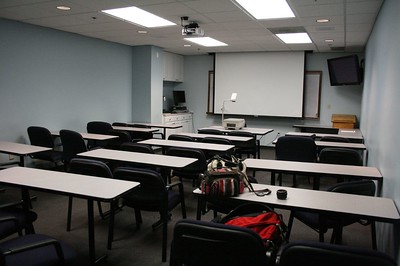A good economy may provide community college administrators with a convenient explanation for low enrollment. The reality may be somewhat more nuanced. Some researchers estimate that 40%-60% of prospective community college students never make it to a classroom. These “drop-outs” get tangled up in some facet of the enrollment process and give up before classes even start. To combat this, some community colleges have begun to analyze their admissions process to find and eliminate barriers.
Community colleges typically see enrollment increases when the economy is sour. The enrollment increases come from several places. People who had previously been in the workforce may find themselves on the outside looking in. During a recession, teen employment drops, as older workers take jobs that teens would otherwise occupy. Because there are fewer jobs available for teen workers, they enroll in classes. During a recession, enrollment rises naturally in response to the economic downturn. It is easy for community colleges to enroll students.
When the economy is good, community college enrollment drops. Experienced workers have access to jobs, and teen workers can find entry-level positions that don’t require post-secondary education. Women with younger children at home may not feel increased pressure to re-enter the workforce. In other words, community colleges have to work much harder to preserve their enrollment.
Knowing why students fail to complete the enrollment process is the first step in boosting enrollment when the economy is good. The most effective barriers could actually be easy to eliminate, but many community colleges don’t address them.
Streamline the student enrollment process
Asking students to return to campus too many times during the enrollment process could shut an applicant out. Prospective students may not have reliable transportation, or can’t take time from work to make multiple trips to campus. They may not have required paperwork or documentation – including a driver’s license, proof of residency, previous academic records, etc.
Process improvements here might include providing one-stop enrollment opportunities, verifying residency when the student completes the online application process, and providing checklists to help students identify the documentation they need before they arrive on campus can all help students through the application process. Covering transportation costs to and from campus for prospective students may also eliminate process dropouts.
Placement tests can be barriers to enrollment
Placement tests can create more process dropouts. Community colleges typically use placement tests to determine a prospective student’s math and verbal aptitude. Unfortunately, placement tests can place students initially in the wrong classes. When this happens, it may increase the number of classes a student must take to finish a program and derail a prospective student’s academic plans. This isn’t a small problem. The Community College Research Center estimates that nearly 30% of students end up in the wrong introductory math class and 20% of students end up in the wrong introductory English course.
Fayetteville Technical Community College analyzed its placement test results after discovering that just 12% of military applicants tested into college math. The students intended to enroll in a one-year program designed for local military members, but the inability to test into college-level math significantly delayed their completion plans. To help overcome this, the college created a pre-enrollment math refresher course. After making this course available, 92% of military applicants tested into college-level math, and were able to complete the course as designed.
Incomplete academic advising can hurt incoming students
Believe it or not, declaring a major can also be a barrier for some students. A student may know that he or she wants to go to school, but may not know exactly what they want to study. Community colleges offer short-term certificate programs and two-year degrees. The programs are designed to allow a student to hit the ground running. Recent high school graduates may not know what they want to do, so declaring a program becomes a major problem. Solid academic advising, skills inventories and other tools can help students determine where their interests and skills lie.
Financial aid is a barrier well before students get through the financial aid process. In fact, not only do students not complete the financial aid process, many never even start. Prospective students at the community college level may not know how the financial aid process works. They may not be able to complete the Free Application for Federal Student Aid without assistance. Failing to complete the FAFSA locks students out of most financial aid. Since community college students may require significant financial support, not completing the FAFSA may end a student’s studies before they begin.
Understand and eliminate enrollment barriers
When institutions understand what prevents their prospective students from enrolling, they can take steps to eliminate these barriers. By allowing students to finish the enrollment process, community colleges have increased their new student populations by 5% or more.
But it means that community colleges have to do the hard work of identifying the barriers that their prospective students experience. In some cases, the barriers have been erected (unknowingly) by the institutions themselves. Awkward multi-step processes, unhelpful assessments and limited academic and financial aid advising may remove the majority of applicants from college classrooms.
WCC cannot wait for enrollment process survivors to show up in the classrooms. They cannot simply wait for students to walk in the door when the economy is good. By taking a different approach to recruiting and on-boarding students, WCC could increase its enrollment. And if it did, that would allow the administration to focus on the educational needs of the students instead of pursuing unrelated revenue generation schemes.
Photo Credit: Nicole Mays, via Flickr















